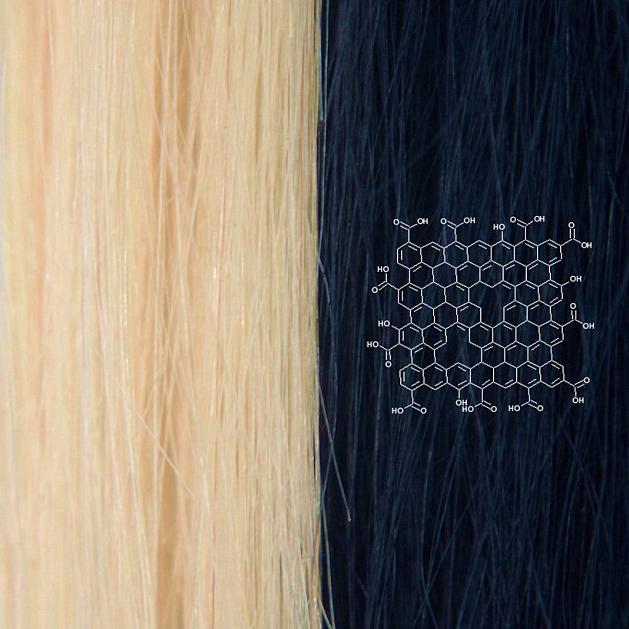Scientists from Northwestern University in Illinois, US, created a new dye using strong and conductive graphene, that coats the hair instead of penetrating it to avoid cuticle damage.
A materials scientist at Northwestern University, Jiaxing Huang, has a trendy (at the least in the world of science and research) solution to this problem. It involves the super material graphene, which is incredible light, strong, and conductible. The graphene-based dye coats, rather than penetrates, hair, reducing the amount of damaged caused when making the leap from blond to black.
Most hair dyes in use today are quite aggressive in penetrating the hair cuticle. This quality allows the dye to get inside the strand of hair and stay there, so that the hair color is permanent.
“Your hair is covered in these cuticle scales like the scales of a fish, and people have to use ammonia or organic amines to lift the scales and allow dye molecules to get inside a lot quicker,” says senior author Jiaxing Huang, a materials scientist at Northwestern University.
Lifting the cuticle makes the strands of hair more brittle and prone to breakage. It’s made even worse by the use of hydrogen peroxide, which is used to bleach the natural hair pigment and initiate the reaction inside the hair strand between the colorants necessary to create the final dye.
The graphene-based dye coats the strand rather than going inside of it. It can be applied by spraying, brushing, and drying it on the hair. It doesn’t contain organic solvents or toxic chemicals.
“However, the obvious problem of coating-based dyes is that they tend to wash out very easily,” says Huang.
Huang and his research team created a graphene-based dye that made platinum blond hair jet black, and it stayed that way for 30 washes—the minimum number that a dye needs to be labelled as “permanent”.
Although this may seem a frivolous use of graphene, the properties of graphene are well suited to this purpose. The material is made of thin, flexible sheets which makes it good at covering uneven surfaces. These sheets keep out water well, which is ideal for keeping the color between washes. The material is conductive and is being researched for all sorts of electronic applications. This property is useful for a dye, because it could prevent hat hair by dissipating static electricity. The graphene flakes are large enough that the skin won’t absorb them like it does other dyes.
The graphene dye isn’t just a one trick pony—it doesn’t need to be just black. Its precursor, graphene oxide, is light brown and can be darkened with heat or chemicals to a range of different colors. This dye could potentially cover the spectrum of hair colors from light brown to black. They can even be used to create an “ombre” look by applying heat or chemicals in different proportions down the hair (rather humorously, there is an entire section in the scientific paper dedicated to this topic). Most of the world’s population has dark to black hair, so these dyes could be useful to dye gray hairs.
Graphene is naturally black so it is perfect for making those difficult-to-create dark shades. In other applications, the black colour of graphene isn’t desirable, but here it is an advantage because lasting dark hair colors are otherwise hard to create. The graphene used here doesn’t need to be top quality like for other uses, such as electronics, so lower quality materials could be used for this purpose rather than discarded.The study has been published in the Journal Chem. There you have it — using cutting edge science to give hair color an upgrade.















